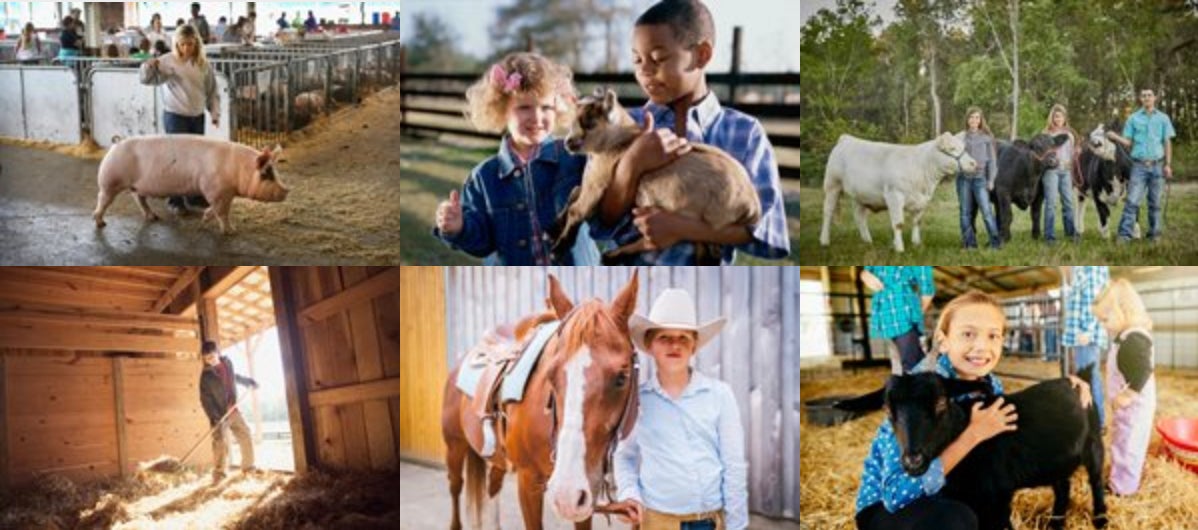FFA and 4-H Build Future Leaders

Young, Beginning, Small & Veteran Farmers
When you think of youth programs in agriculture, the names that usually come to mind are FFA and 4-H. These two nationally recognized organizations remain top of the list when it comes to building future leaders in agriculture.
Current leaders in agriculture can attest their success due to an established foundation of the skills and knowledge needed to work in the agricultural industry. Every industry requires a certain skill set and agriculture is no different. The skills and knowledge base that rise to the top tend to be about interpersonal skills, adaptability, time management, organization, and to be tech-savvy. Leaders in agriculture can credit their success to an established foundation of the skills and knowledge needed to work in the industry. With this being said, it is important for our future leaders in agriculture to gain solid skill sets while they are young and FFA and 4-H are built to do just that!
So how do they do it? First it’s important to learn about the foundation of each organization and what makes them so successful.
FFA
 FFA stands for Future Farmers of America. The official name of the organization is National FFA Organization. FFA was founded by a group of young farmers back in 1928. Their original mission was to prepare future generations for the challenges of feeding a growing population.
FFA stands for Future Farmers of America. The official name of the organization is National FFA Organization. FFA was founded by a group of young farmers back in 1928. Their original mission was to prepare future generations for the challenges of feeding a growing population.
Today, members of the FFA live by the motto “Learning to Do, Doing to Learn, Earning to Live and Living to Serve.” They accomplish this by becoming involved in agricultural experiences, leadership activities, knowledge of wise resource management, and development of interpersonal skills, character and citizenship.
4-H
 4-H represents the four leaves of the clover: Head, Heart, Hands and Heath. The concept of 4-H began in the late 1800’s. Researchers discovered young people, compared to adults in the farming community, were more open to new thinking, experimenting and new ideas, and tend to share their experiences with adults. This spurred the development of 4-H Clubs and connection to the Cooperative Extension System.
4-H represents the four leaves of the clover: Head, Heart, Hands and Heath. The concept of 4-H began in the late 1800’s. Researchers discovered young people, compared to adults in the farming community, were more open to new thinking, experimenting and new ideas, and tend to share their experiences with adults. This spurred the development of 4-H Clubs and connection to the Cooperative Extension System.
Today, 4-H members live by the motto “To make the best better.” The 4-H Club pledge is: “I pledge by head to clearer thinking, my heart to greater loyalty, by hands to larger service and my health to better living for my club, my community, my country, and my world.” They accomplish this by becoming involved in hands-on experiential learning opportunities that promote life skill development. Hands-on experiences focus on one or more of the H’s. Head (managing, thinking), Heart (relating, caring), Hands (giving, working), and Health (living, being).
Understanding the foundation of each organization is important when looking at how they each prepare our future leaders in agriculture. Both offer unique experiences for members and many youth belong to both organizations.
When looking at the two organizations as a whole we can say they are both top notch youth programs building our future agricultural leaders! The skills and knowledge base gained through their involvement reach far beyond the foundation of interpersonal skills, adaptability, time management, organization, and to be tech-savvy. Here are some ways they do it:
Hands on real-world experiences
Youth involved in these programs participate in hands on experiences. From showing livestock to riding horses and everything in-between. Youth learn valuable knowledge and skill when they raise their own livestock for show and/or sale or horse for riding competitions. They learn responsibility as they tend to the daily care of the animal. They learn record keeping skills and organization as they record feed intake, supply expenses, veterinarian care, etc. Youth often get experience with the tools and technology used in the industry. From cattle-working chutes to hooking up trailers and giving vaccines and de-wormers. Hands on projects provide youth with real world experiences that help to teach them the ins and outs of what it takes.

Opportunities
4-H and FFA members are able to expand their involvement by trying new things. Both programs offer numerous activities so their members have a chance to try something new. Members tend to have their top projects that interest them the most, but they can also sign up for and try new things. For example, youth members can become part of their programs leadership councils or groups. These opportunities give youth a chance to try their hand at public speaking, planning, and decision making. When youth are given these opportunities, they are provided the chance to build their interpersonal skills and to improve upon them.
Competitions
Both programs offer extensive competition opportunities. A chance for youth to push themselves toward a goal develops dedication, adaptability, self-discipline, goal setting and character. Most competitions require completion of a project record book. Not only are youth judged in competition, they are also judged on their record keeping and overall understanding of the time and expense associated with their chosen project. Many competitions are timed. The skill of time management comes in handy when given only a set timeframe to complete a task to the best of their ability and in the safest way possible.
Community Involvement
Learning to give back builds empathy and caring for others. Community involvement is a large part of both organizations. Youth get involved in service activities assisting fellow organizations within their communities. They often have bake sales or other fund raisers to assist local efforts. They will donate their time assisting with the care and keeping of farm animals at local rescue farms. Older youth members often assist younger members with their projects becoming their mentor and role model.
Regardless of a youth member’s project, these powerful youth programs are set up to provide youth with valuable skill building opportunities with real-world appliaction. Youth participating in 4-H and FFA year after year build on their foundation of skills, getting better over time.
Today’s leaders in agriculture can contribute their success to being involved in 4-H and/or FFA. Often times they each have their story and set of experiences that brought them to the work they are currently doing in the agriculture industry. 4-H and FFA continue to provide today’s youth with priceless opportunities that help them to gain interest in the industry of agriculture. Projects and program involvement widen their range of knowledge and skill in many areas.
To be prepared for a future in the industry of agriculture can be dependent on a strong foundation of knowledge, skill and experience. 4-H and FFA have been and will continue to be the top leaders in producing our future agricultural leaders.
Do you have a FFA or 4-H story to share? How did your experience in the program shape you and your involvement in agriculture?